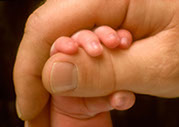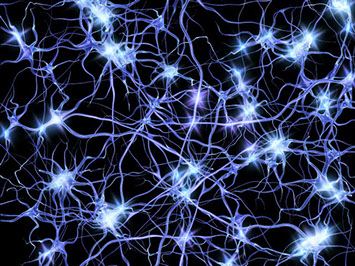
Omega Solutions
Behaviour Strategies and Training

Omega,
Sidsaph Hill,
Walkeringham,
DN10 4HP
Tel. 07540 707356 (Kevin) Email: khayes@omegasolutions.co.uk
07968 423795 (Julie) Email: sensory@omegasolutions.co.uk
Attachment in Detail
From the work of Mary Ainsworth and John Bowlby the attachment relationship is categorised by 6 elements:
1. It is ongoing
2. It is emotionally significant
3. It is directed towards a specific person
4. It is focused on maintaining contact with that specific person
5. Involuntary separation brings about distress
6. It is concerned with seeking safety and comfort.
The first 5 of these elements are common to other emotional bonds but the last one is unique to the attachment relationship.
Ashley Montague, a scientist and anthropologist puts forward the concept of an 18 month gestation period for humans; 9 months in the womb (uterogestation) and 9 months out (exterogestation). He, and others, suggest that essentially we are all born prematurely out of necessity: the relationship between skull size and having a narrow pelvis as a result of walking upright.
Babies are therefore completely dependent upon an attentive caregiver for their survival and subsequent development.

With a secure attachment a child has a 'secure base' from which to explore their world, have new experiences and develop their independence.
Children with a secure attachment are able to manage their own behaviour and control their emotions. This self-regulation cannot come about until there has been a sustained period of co-regulation with an emotionally available adult.
Children are better equipped to relate to others and develop healthy inter-personal skills if they are secure in their own identity, which comes from having a secure attachment.
With an attuned relationship baby and carer will both go through a cycle of stress arousal, stress modulation and a pleasurable feeling from the soothing process.
Under these conditions the babies' brains develop optimally as connections between neurons are formed at a phenomenal rate.
A brain tissue sample the size of a pin head will, at 20 weeks gestation have around 124 million connections. Birth will see around 253 million connections and by age 8 months there will be around 524 million connections in that same sized tissue sample. This is far more than the person will need as an adult and a form of 'pruning' takes place in adolescence of unused connections.
Brain
Development

Stress is toxic to brain development, causing structural changes and inhibiting the formation of significant 'wiring'.
Babies whose caregivers to not respond to their needs in a timely and attuned manner do not develop the myriad of connections that optimal responses bring about. In addition there is a 'pruning' of unused connections. These babies will have physically smaller brains than those developing in more favourable environments.
Toxic stress (persistent, unresolved) in infants brings about adaptive survival-based states of either hyper-arousal (more often associated with boys) or defensive dissociation (more common in girls). Hyper-aroused infants will demonstrate perpetual signs of irritability and distress, whilst dissociation brings about no outward reactions despite there being high arousal. (More on Stress by clicking on the red button)

How do we facilitate Attachment?
Sensitive reliable responses to the behavioural cues of the infant that reduce physiological arousal and promote an experience of well being are fundamental to the development of secure, organised attachments. Equally important, however, is the capacity of the care giver to respond to the infant’s emotional experience. Care givers who promote secure attachments in their babies are fascinated by what is happening in their child’s mind. They treat the baby as a human being with developing emotions and react not only to behavioural cues such as crying but also to the negative emotion they assume underlies the distress. Through facial expressions and verbal cues these care givers reflect back to their baby what they believe is happening in the baby’s mind. This “affect mirroring” process repeated several times a day from birth enables securely attached children not only to develop a sense of their own internal world but also helps them to recognise others as beings with minds, emotions and intentions.
Children whose care givers cannot demonstrate this interest in and awareness of their infant’s internal world can experience great difficulty in developing this kind of “mind mindedness” which is an essential building block of social competence.
It is important to recognise that adults who are unable to provide this kind of sensitive mentalising care may still genuinely love their children. It is also, however, important not to privilege the fact of parental love over other aspects of the child’s needs. As a review of attachment theory undertaken for the Royal College of Psychiatrists asserts: ‘A loved child who is unsafe is in physical and psychological peril. Love alone is insufficient.’
Copyright © Kevin & Julie Hayes 2021